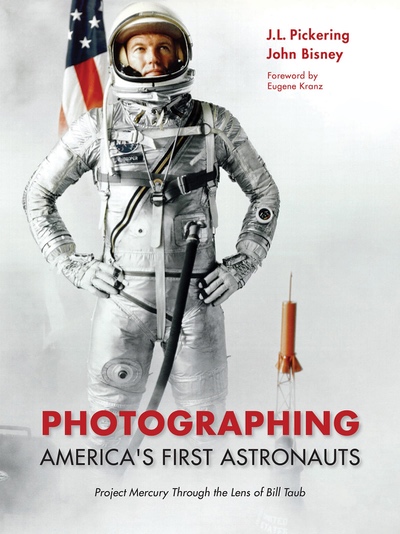Review: Photographing America’s First Astronautsby Jeff Foust
|
| “I am not easily impressed with individual photo collections, but I was happily overwhelmed” with Taub’s photo collection, Pickering recalled. |
There were enough previously unseen images from Mercury to lead Pickering and co-author John Bisney to pursue a book. (They left open the possibility of doing another book based on other images from Taub’s collection.) That required significant work on their part since, while the collection was extensive, it was not well organized, requiring them to do “extensive detective work” to determine when some photos were taken.
The result is worth the effort. Each Mercury Seven astronaut gets a chapter in the book in chronological order of their missions, with images from training and pre-launch preparation as well as recovery after their flights. (Deke Slayton, who was bumped from his Mercury flight because of a heart condition, is placed in the book where he would have flown, after John Glenn.) A couple other chapters are devoted to the Mercury program more generally and some of the other people involved, like public relations chief John “Shorty” Powers and Dee O’Hara, the nurse assigned to the Mercury Seven.
The photos offer no revelations about the Mercury astronauts or their missions, nothing that would change our understanding of those men and their missions. Instead, they help fill out the historical records. Some of the photos are obvious publicity shots (like the cover image featuring Gordon Cooper, who the authors said had the most, and the most creative, portraits.) Others, though, are candid shots of training or launch preparations, or recuperating after their flights. A few are goofy, like one of Scott Carpenter sticking out his tongue after a mission simulation, which the authors see as evidence of how comfortable the astronauts were around Taub.
After seeing the photos in Photographing America’s First Astronauts, one wonders what other hidden treasures are out there from the early Space Age—other photos, films, or documents—yet to be uncovered, refreshing memories of that earlier spaceflight era. The distant past need not be so distant.
Note: we are using a new commenting system, which may require you to create a new account.
